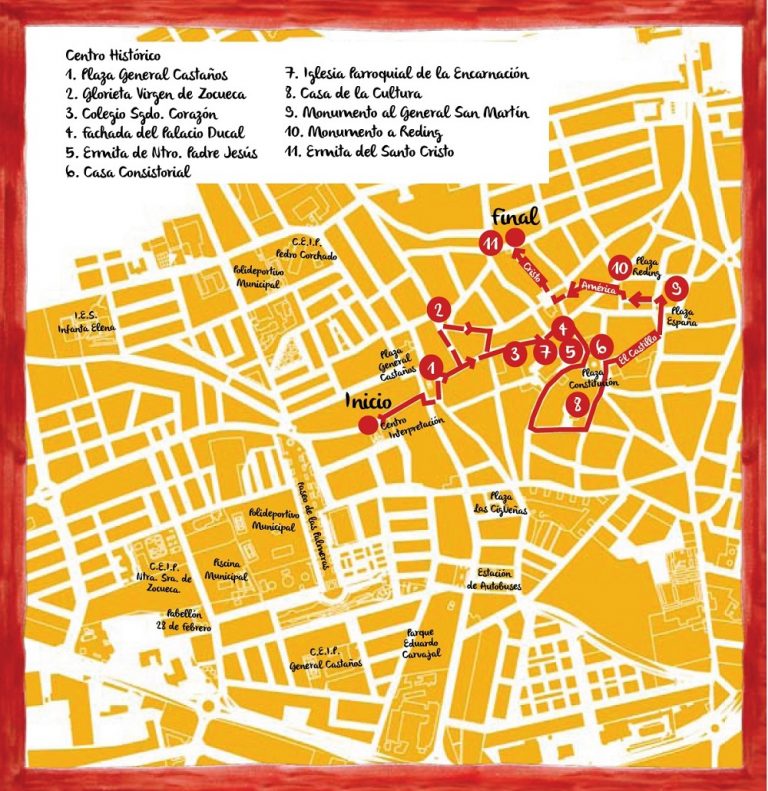The start of our journey through the historic heart of Bailén begins standing in front of the Museum of the Battle of Bailén, where later the Plaza General Castaños (Commonly known as “El Paseo” [The promenade]) will open up to connect some of the most relevant streets of the city, like the Zarco del Valle and María Bellido streets. All meant to take us to the place where the heroine, María Bellido, once lived, nearby the emblematic Glorieta Virgen de Zocueca (Virgin of Zocueca Roundabout, commonly known as “La Carrera” [The Race]).
The Cristóbal Colón and Isaac Peral streets will take you once again to the Isabel la Católica street (Commonly known as Calle Real [Royal street]). Here, you could see the facade of the Colegio Sagrado Corazón de Jesús (Holy Heart of Jesus School) from the 18th century, residence to the San Vicente de Paúl sisters since 1916, when the building was donated to them by Ms. Mariana Soriano.
In this journey through Bailen’s history, the Fachada del Palacio Ducal (Ducal Palace Facade), owned by the Ponce de León family is the next stop of our route. Symbol and memory of what was once the city’s fortress and home to the Counts of Bailén. Next to it, the Ermita de Nuestro Padre Jesús (Our Father Jesus Chapel) from the 18th century answered once upon a time to the name of Ermita de Santo Cristo de Nazaret (Saint Christ of Nazaret Chapel), which could be seen from the old Camino Real, guarded by nothing more than three houses.
Then, the Casa Consistorial (Town Hall) places us at the most centric place of the city, located at the most ancient and yet recently renovated Plaza de la Constitución (Constitution Square, commonly known as “Del ayuntamiento” [Town Hall square or “Del Reloj” [Clock’s square]). Next, it is time to enjoy an architectonic marvel from the 15th century, the Iglesia de Nuestra Señora de la Encarnación (Our Lady of the Incarnation Parish Church), declared a historic-artistic monument in 1983.
We will continue our way through the Amargura street, which withholds great significance during Bailen’s Holy Week, and in which we will spot the Casa de la Cultura (Culture’s House) after stepping into the Héroes de Bailén street (Heroes of Bailén street).
During the last stretch of our journey we will let our imagination run wild, as we will dive into the place where we will find the old Castle of Bailén (Nowadays, “El Castillo” educational center). Ascending through the street named after the castle, we will find the Plaza de España (Spain’s Square), where the monument to General San Martín will show us the way to reach Plaza Reding (Reding Square), in honour of General Reding who would implement General Castaños’ plan that would defeat the invincible napoleonic troops. After this stop, the America street will serve as a link to reach the end of our journey in the Ermita del Santo Cristo (Saint Christ Chapel) from the 18th century.

Actividad financiada por:
